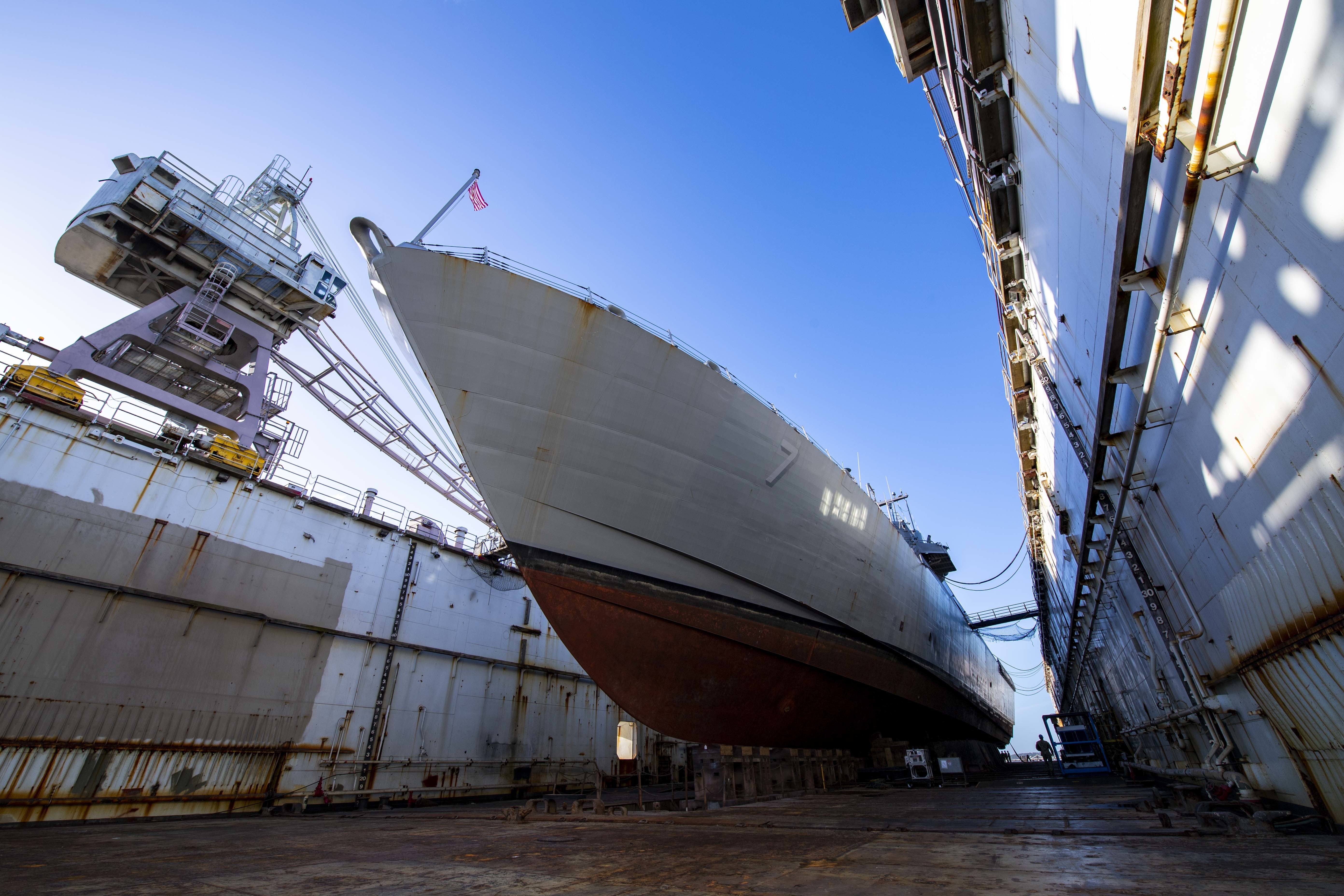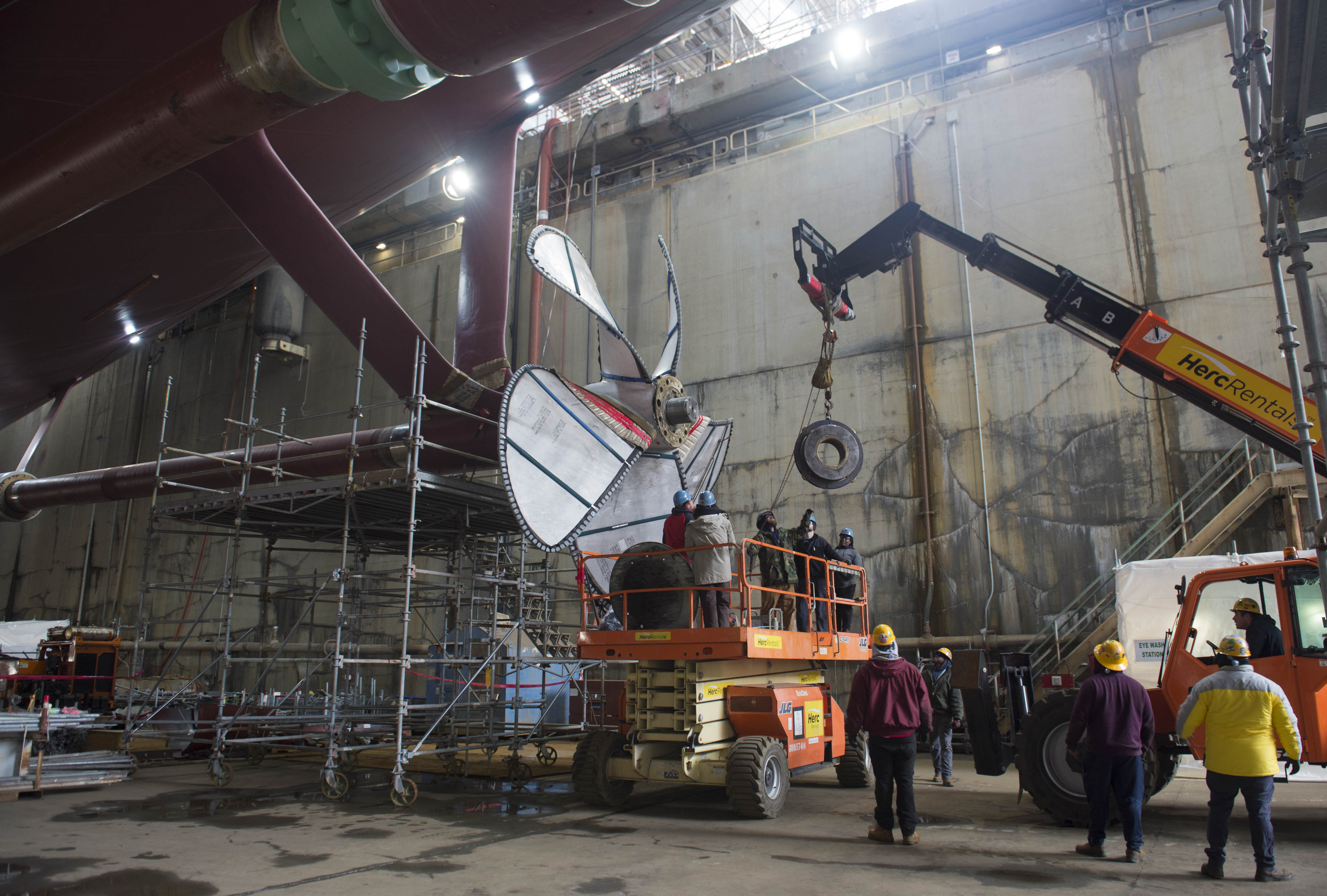
This post has been updated with additional context on the Pentagon’s COVID-19 acquisition memo.
The Navy may have to sacrifice modernization efforts if it does not receive adequate relief funding to cover acquisition costs sustained due to the coronavirus pandemic, according to a top service official.
Navy acquisition chief James Geurts told reporters today that to sustain a ready force, the service would have to make cuts to procurement and modernization if it does not get additional relief money for contractors.
“And so my fear is . . . we are going to have to impact modernization or procurement programs to make up for that inefficiency, which I don’t think anybody wants to do,” Geurts said. “And that’s why we think it’s critical to have this discussion and seek to make the adjustment now versus having to make that by sacrificing elements in the future.”
Geurts pointed to a memo, first reported by Inside Defense, that lays out funding amounts the Defense Department says it needs to pay for acquisition cost growth the Pentagon suffered from mid-March through mid-June due to the coronavirus pandemic.
The document breaks down the money each service would require, with the Navy asking for nearly $4.7 billion in relief funding and the Pentagon requesting approximately $10.8 billion. According to the memo, more than 43,200 Navy jobs have been affected by the pandemic.
The memo, which is unsigned, cites an array of reasons for the rising costs, including remote work, the lockdowns put in place to combat the pandemic, and purchasing personal protective equipment.
While the document said it included a separate spreadsheet that would provide more details on the cost increases, a Senate aide told USNI News that the spreadsheet did not accompany the memo.

Geurts described the $4.7 billion as “a good estimate” for the Navy’s slice of the acquisition relief funding and said the service continues to adjust its assessments depending on how the shipyards are operating and how various programs are performing.
In an effort to provide stability to the industrial base during the pandemic, Geurts has described his approach during the last few months as seeking to provide contractors with a consistent flow of work.
The service is also distinguishing between program cost growths brought on by the pandemic and surging costs caused by separate performance issues, Geurts noted.
“This is not a get-out-of-jail-free card, so to speak, in terms of we’ve been very careful to differentiate what is performance impacts on contracts pre-COVID from COVID-unique impacts and trying to separate those two different elements, where we have programs not meeting their targets,” he said. “This is not to make up for non-COVID impacts. There are certainly areas where we have had to adjust our production output due to some of the COVID impacts at the shipyards. And so this essentially – if we can’t do that – we’re just going to have to eat out of future modernization or production to backfill that inefficiency.”
Geurts’ remarks come after lawmakers criticized the Pentagon’s recent bid for more relief money to provide its contractors. House Armed Services Committee Chairman Rep. Adam Smith (D-Wash.) and Senate Minority Whip Sen. Dick Durbin (D-Ill.) co-wrote an editorial last week in Defense News that said “the lack of detail” in the Defense Department’s appeal “raises serious questions.”
“We do not know what it is for, what problems it will and will not fix, and why other funding and tools are not working,” the lawmakers wrote. “We also suspect that the Pentagon has not done its homework on behalf of American taxpayers before asking for this money.”
While lawmakers in March passed the CARES Act to aid the economy in the wake of the pandemic, negotiations over another round of relief funds have recently hit a wall in Congress. Senate Republicans last month unveiled a relief proposal that included $2.2 billion for Navy shipbuilding. But Democrats criticized the package, arguing it did not tackle the consequences of the pandemic.
Geurts also referenced a portion of the Pentagon memo that said one of the private shipyards could potentially close down due to the effects of the pandemic. But the Navy’s acquisition executive said the language was not meant to imply that a yard could close for good.
“At least one of the big seven private shipyards may shutdown,” the memo reads. “Recovery from a full shutdown would extend inefficiencies well into next year after restart.”
Geurts said the concern was that a coronavirus outbreak in a yard could lead to a short-term closure, a possibility he said the service must still prepare to address in case it occurs.
“COVID is not a place where I think anybody is out of the woods yet, in terms of how it might impact us in the future,” he said. “All I can say is we’ve got really good communication and we’re learning from each other and we’re doing everything we know how to do to try and mitigate the risk of that occurring. But until we – we as a world – figure out how to get our arms around it, I think we’ve always got to be hoping for the best and planning for the worst. And so we continue to do that.”





